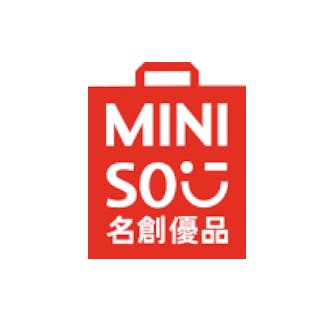Funds in Focus

How do Chinese companies succeed internationally
- Published
The subject is viewed with a mix of fear and fascination: Chinese companies are expanding on all continents. Setting these sentiments to one side, the causes of this success are not always clear. Two seemingly contradictory qualities explain these successes: the capacity of Chinese firms to go beyond a purely traditional mindset, and their skill at applying their specific strengths across the globe. With this paradoxical approach, born of openness to the world and confidence in their own qualities, these companies are deploying their skills worldwide.
A capacity to go beyond a purely traditional mindset
Culture of opportunity and replaceability

Since their economy was opened up forty years ago, many entrepreneurs have succeeded in creating giant companies in their category – all sectors combined - thanks to their immense energy and the huge size of the Chinese market. Their biggest strength? Incomparable daring in seizing opportunities. In their book Dragon Tactics, Sandrine Zerbib and Aldo Spaanjaars call this aptitude “Wolf Culture”. Hunting in packs, convincing people very quickly, not adverse to internal competition – more than the individual, it is the best model that must win. Chinese corporate culture is based on collective success and employees very often feel part of the same family.
The limit to this collective culture of opportunity is efficacity. Efficiency has sometimes been sacrificed to winning new clients. But the companies that are succeeding today internationally have been able to add the culture of replicating models to that of opportunity. This is a real source of efficiency.
Management openness
The second area of change is management. Often of family or clan origin, global Chinese companies have been able to go beyond their purely traditional influence by appointing managers who have worked and studied outside China (particularly in the US) or local managers with the ability to understand and enrich their model. For example, Ariel Wizman, a journalist and entrepreneur, has become one of Miniso’s partners in France. Jonathan Siboni, another partner, has worked for several years with China in the luxury goods sector. Combining practical and fun clothing, Miniso sells more than 15 categories of everyday and household products: the brand and its products are made in China, with an abundant, joyful presentation of Asian inspiration drawing on the manga universe or K-pop. Its success is indisputable: 16 stores have been opened in two years.
-
In practice

Chinese franchise Miniso has created more than 5,500 retail outlets in more than 100 countries at a time when, alas, several retail banners have had to shutter their doors in urban centres1.
Teambuilding
The third criterion of success is the ability to work in teams. Once deeply focused on their own networks (Guanxi), successful Chinese companies have learned how to form strategic and complementary partnerships for their products and are open to outside shareholders, something at odds with a once highly protectionist and clannish culture.
-
In practice

The JD.com e-Commerce site has joined forces with Tencent to capitalise on its financial investment and media firepower, notably thanks to Wechat, a social network used by more than one billion Chinese people1.
An ability to apply their strengths without complexes

If we had to choose three qualities that differentiate these companies that began by growing in China, we would pick their industrial and artisanal know-how, their capacity for innovation and their great adaptability coupled with their long-term vision.
Industrial and artisanal know-how
If the centre of gravity of industrial production remains in China despite the ramp-up of other emerging Asian economies (India and South-East Asia), this is explained by four decades of intense industrial production that has resulted in the development, province by province, of an ecosystem of companies and suppliers functioning as a network with the aid of very strong logistics and a local bureaucracy often supportive of these developments. This is a major strength.
Capacity for innovation
The second aspect lies in their way of innovating. Before reaching Everest, Chinese and emerging companies do not hesitate to test other, more accessible summits. This can be seen, for example, with companies that mass produce batteries for electric vehicles: they began by making small batteries for smartphones before raising their skill levels and efficiency to specialise in electric vehicle batteries. Companies rarely innovate without making errors.
-
In practice

This also applies to another leader in the batteries sector, Korean group LG Chem, which in the past experienced difficulties in producing its batteries with General Motors but has today become a recognised world leader, signing new strategic partnerships, notably with Stellantis. These innovations, pursued step by step, are similar to the progress of so-called generative artificial intelligence, such as Chat GPT-4, the result of numerous trials and errors1.
Long-term adaptability
The third strength is extreme adaptability. This takes us back to the concept of the long term linked to the speed of the leopard. Acting quickly and attempting be the first into a new market may be more profitable than conceiving a perfect strategy. This does not imply a lack of long-term vision. Doing business without having a strategy (this can come later) is not necessarily a mistake. What matters is controlling the long term and the short term. This approach is deeply woven into Chinese culture: in Confucius, as well as in Korea, fluidity in and between things matters far more than any definition of a concept set in stone. As Lao Tseu taught, “Become as fluid as water that always finds its path by adapting to the ground”.
-
In practice

Businessman Jack Ma puts this philosophy into practice. Divided today into six entities, his Alibaba group has been able to adapt. Like any giant group, the Chinese E-Commerce leader is not immune from geopolitical strains, but its founder, who was thought to have been defeated, has returned with a new vision. His logistical entity is even considering an IPO in Hong Kong at the start of 2024. This would be another step towards the group’s international expansion1.
Aware of the opportunities offered by the Chinese economy, we at Carmignac prefer to capitalise on this trend by investing in innovative companies that have successfully grown internationally. Emerging Asia is the region where we identify the largest number of innovative companies in the technology, consumer and internet sectors, all at the cutting edge of the digital revolution.
Within our emerging market allocations, and in particular in our strategy dedicated to China, Carmignac Portfolio China New Economy, we have invested in companies such as Miniso1, the specialist in everyday consumer products, present in more than 100 countries thanks to its 5,500 stores across the world (3,300 in China and 2,200 outside China), with 50% of net profit generated abroad.
What’s more, our flagship emerging equities fund, Carmignac Emergents, is exposed to promising Asian stocks thanks to their technological edge, large-scale production and capacity and strong appeal for semiconductor manufacturers1. For example, the Fund is invested in the specialist manufacturer of batteries for electric vehicles, and Taiwan Semiconductor’s biggest foundry1.
1The brands and logos used do not imply any affiliation with these entities, nor their approval.
The portfolios of Carmignac funds may be modified at any time without notice.
Want to find out more?
Visit the Funds’ webpages:
Carmignac Emergents A EUR Acc
Recommended minimum investment horizon
Lower risk Higher risk
Potentially lower return Potentially higher return
EQUITY: The Fund may be affected by stock price variations, the scale of which is dependent on external factors, stock trading volumes or market capitalization.
EMERGING MARKETS: Operating conditions and supervision in "emerging" markets may deviate from the standards prevailing on the large international exchanges and have an impact on prices of listed instruments in which the Fund may invest.
CURRENCY: Currency risk is linked to exposure to a currency other than the Fund’s valuation currency, either through direct investment or the use of forward financial instruments.
DISCRETIONARY MANAGEMENT: Anticipations of financial market changes made by the Management Company have a direct effect on the Fund's performance, which depends on the stocks selected.
The Fund presents a risk of loss of capital.
Carmignac Portfolio China New Economy F EUR Acc
Recommended minimum investment horizon
Lower risk Higher risk
Potentially lower return Potentially higher return
EQUITY: The Fund may be affected by stock price variations, the scale of which is dependent on external factors, stock trading volumes or market capitalization.
EMERGING MARKETS: Operating conditions and supervision in "emerging" markets may deviate from the standards prevailing on the large international exchanges and have an impact on prices of listed instruments in which the Fund may invest.
CURRENCY: Currency risk is linked to exposure to a currency other than the Fund’s valuation currency, either through direct investment or the use of forward financial instruments.
LIQUIDITY: Temporary market distortions may have an impact on the pricing conditions under which the Fund might be caused to liquidate, initiate or modify its positions.
The Fund presents a risk of loss of capital.



